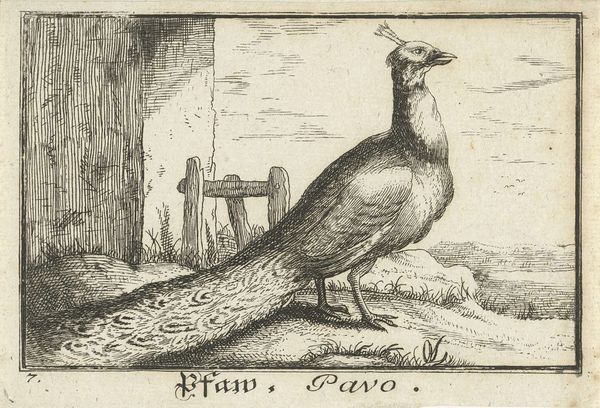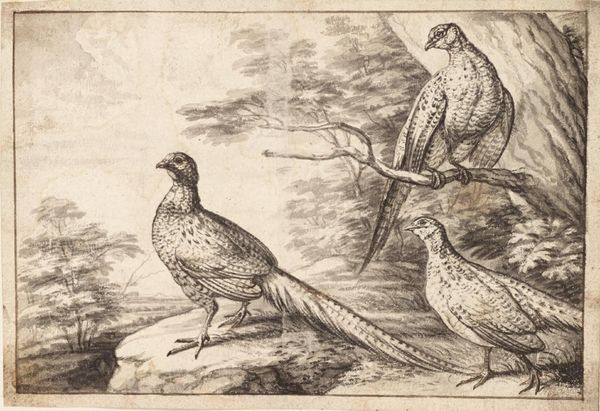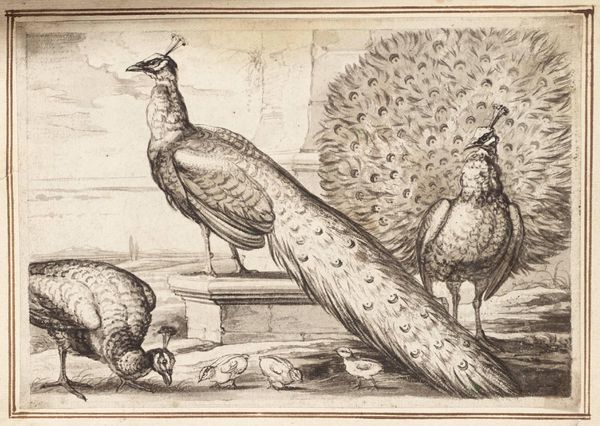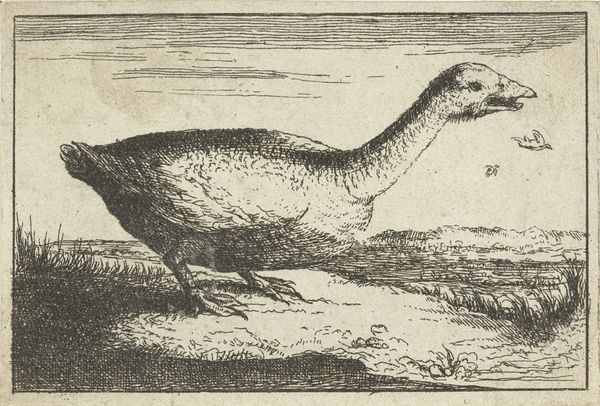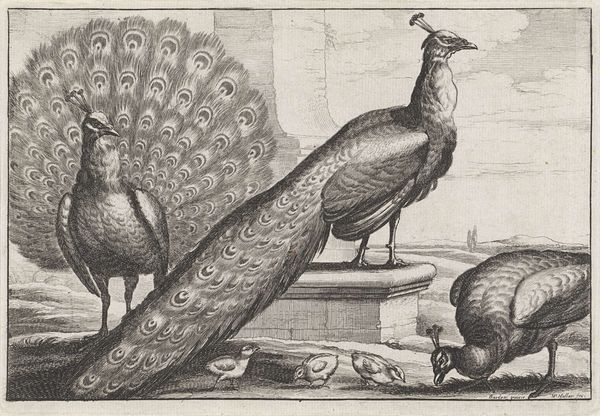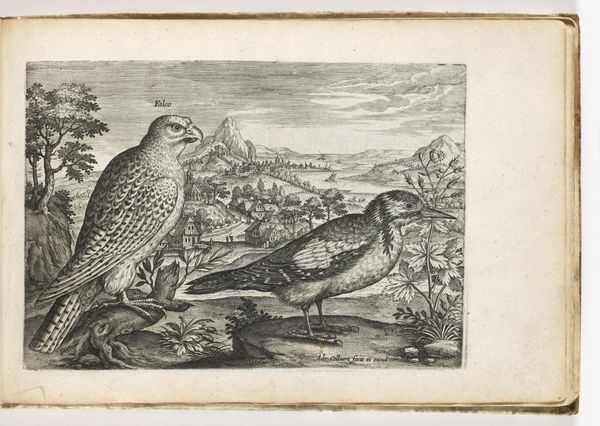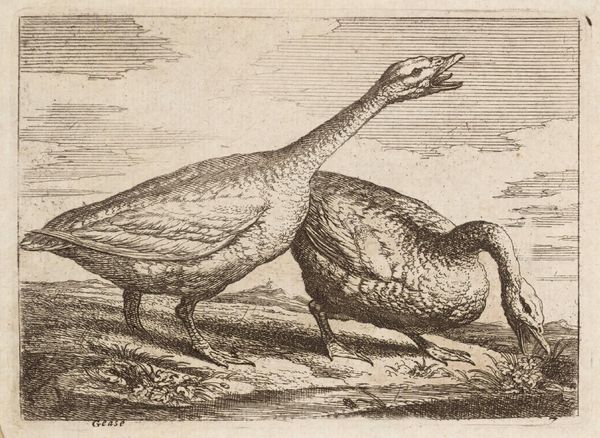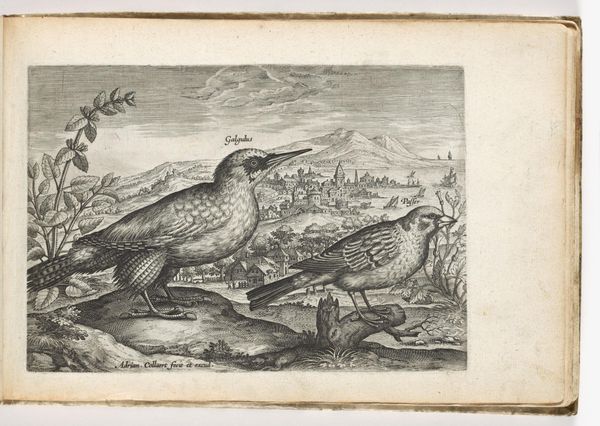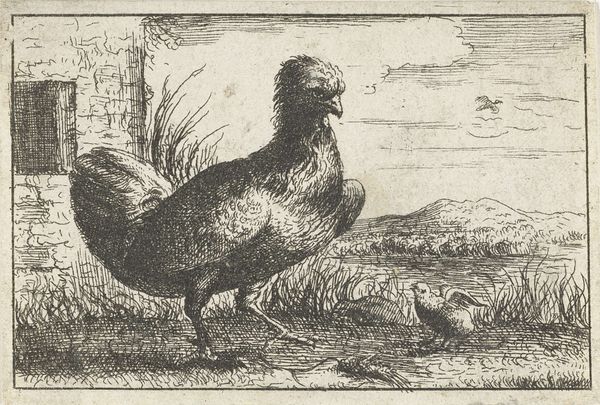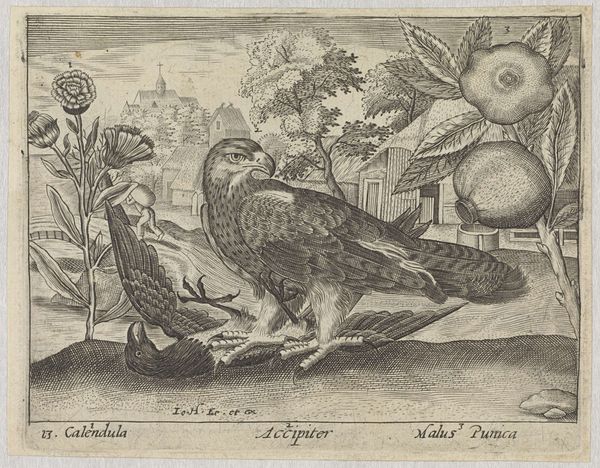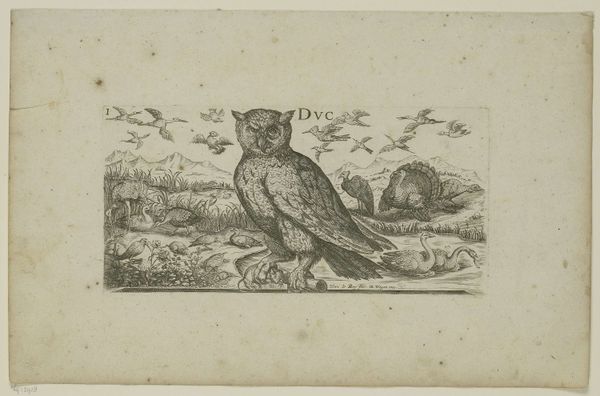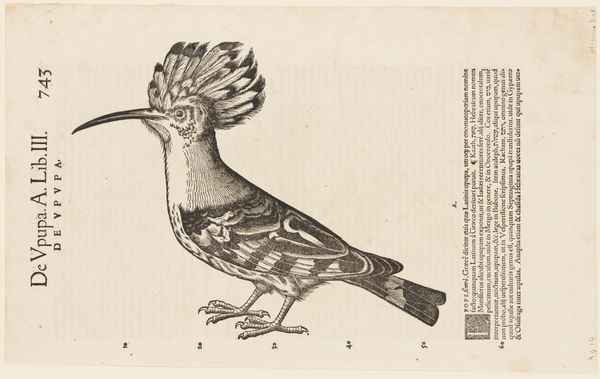
print, etching, engraving
#
baroque
# print
#
pen sketch
#
etching
#
old engraving style
#
landscape
#
engraving
Dimensions: height 70 mm, width 98 mm
Copyright: Rijks Museum: Open Domain
Albert Flamen created this etching of a peacock in the 17th century. An etching is a printmaking technique that relies on acid to bite into a metal plate, traditionally copper or zinc. Here, the linear quality comes directly from the process. The artist would have covered the plate with a waxy, acid-resistant ground, then drawn the image with a sharp needle, exposing the metal. Immersing the plate in acid would etch the lines, allowing them to hold ink. It's a relatively indirect process – the artist doesn't directly cut into the plate, but coaxes the image into being with chemistry. This print is quite small, suggesting it was intended for a book illustration. The printmaking trade had become increasingly specialized, but the labor of production remained intense. Etchings like these fueled an expanding market for images, bringing art to a wider audience than ever before. Understanding the printmaking process helps us appreciate the skill involved, and its place in a burgeoning culture of consumption.
Comments
No comments
Be the first to comment and join the conversation on the ultimate creative platform.
